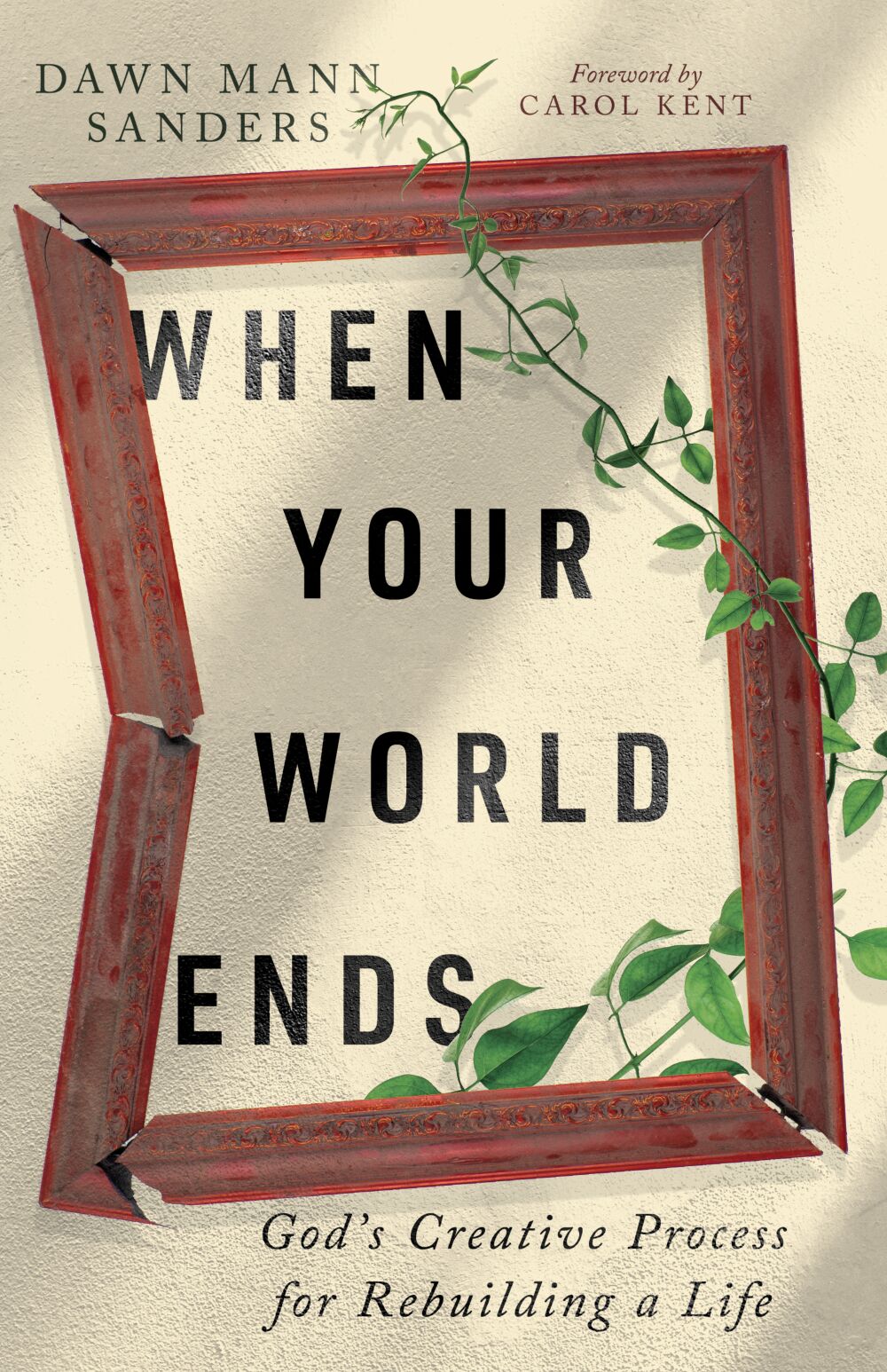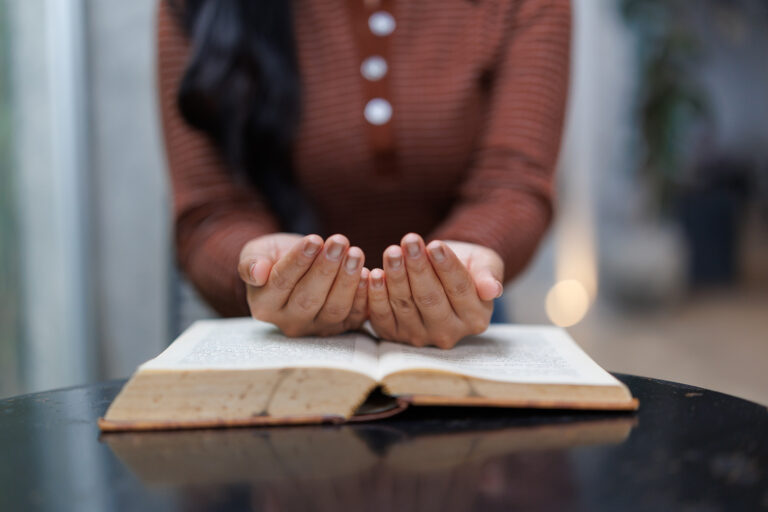The Spring after Reggie died, my nephew asked me to care for his infant daughter, my great-niece. Not having been a parent myself, I hadn’t cared for a child in my home before. Don’t get me wrong. I often babysat a family member’s or friend’s child—just not at my home. It was usually at the child’s home, a park, museum, or some other place, not my home.
When my nephew brought his daughter, he also brought everything I needed to feed and clothe her, but not much in the way of activities. After spending a few days with her, I quickly learned that for both of us to thrive while she was in my care, we needed things to keep her occupied and entertained as well. So, I invested in a few books, toys, and activities to keep her engaged and happy while with me.
Similarly, I see God provided all we need to thrive when He created humanity’s environment, the Garden of Eden, in Genesis 2.
The Garden of Eden
As part of creating the heavens and the earth, God created the Garden of Eden. Then, God formed Adam and placed him in the garden—the environment God created to support humanity’s survival and growth.
I am looking at the Garden of Eden as part of our deep dive into Genesis 2:15-17 that we began a few weeks ago. In Genesis 2:15-17, we find the first choice God gave to humanity, the choice of selecting our food. Since we can apply humanity’s first choice to other life choices, in this passage, we can find guidelines we can use to choose the activities that make up our lives.
Then the Lord God took the man and put him in the garden of Eden to tend and keep it. And the Lord God commanded the man, saying, "Of every tree of the garden you may freely eat; but of the tree of the knowledge of good and evil you shall not eat, for in the day that you eat of it you shall surely die." ~ Genesis 2:15-17
Our exploration of the Garden of Eden is the second article in a series of articles on decision-making when creating our new lives.
Creating a new life begins with a desire, but making your desire a reality takes action—many actions taken over time. Together these actions or activities become our lives. “But what do I do?” you say. This series is my response to that question.
Location, location, location
Now, you may remember that we visited the topic of location briefly in the first part of our deep dive on trees. There we discussed trees only grow in one spot. The trees God directed Adam to eat from were located in the Garden of Eden—the same location as Adam’s assignment. From this location, we got our first guideline:
Guideline #1: Choose activities that align with our assignments.
That tells us what to do. We are to choose activities that align with our assignments. Check.
Creating a new life begins with a desire, but making your desire a reality takes action—many actions taken over time. Together these actions or activities become our lives.
Today’s post delves deeper into the location of the Garden of Eden, not to answer what to do, but to answer why it behooves us to do so. Motivation often takes two forms: carrots and sticks. My use of carrots and sticks here refers to the motivational approach of offering carrots (or rewards) to encourage someone to do something and sticks (or punishments) as a consequence if they choose not to do something.
Today’s post focuses on two carrots related to the Garden of Eden:
1. Sanctuary
As I dug deeper into the background of the Garden of Eden, I was struck by the spiritual nature of man’s first habitat conveyed through the words in verse 15. First, the word translated “took” in verse 15 means “to be taken in marriage,” as in “I take thee…” in the traditional wedding vows. In other words, not only did God position Adam physically, when God “took” Adam, God was positioning Adam relationally.
Since God initiated it by taking Adam, this demonstrates God wanted to be in relationship with Adam. And God wants to be in relationship with us, His Bride. With this in mind, He brought Adam to the home He provided for His Bride, the Garden of Eden. As such, the garden was where humanity was to live and commune with God. By communing, I mean the Garden of Eden was where humanity would share their intimate thoughts and feelings with God.
But wait. There is more. The word translated “put” in the same verse in Hebrew means “rest” in the sense of ceasing activity and work for the purpose of relaxing and recovering one’s strength. In other words, the Garden of Eden was a sanctuary—a place of rest, the place where God placed humanity in order to refresh and restore our souls (Psalm 23:3).
Choosing activities that align with your assignment is refreshing and restorative. Share on XAlso, the two verbs used in the conclusion of this verse to convey Adam’s service to the garden, translated “tend” and “keep”, denote spiritual service. Here, “to tend” means “to worship and serve the Lord” and “to keep” means “to obey the Lord’s commands.” This means whatever actions Adam performed in tending and keeping the garden were done in worship and service to the Lord, and in obedience to His commands. And since the garden was a place of relationship and rest, performing these actions would refresh and restore his soul.
So, why choose activities that align with your assignment? Because choosing activities that align with your assignment is refreshing and restorative. That leads me to two more guidelines:
Guideline 6: Choose activities that worship and serve the Lord.
Guideline 7: Choose activities that obey the Lord’s commands.
2. Satisfaction
When creating the Heavens and the Earth, God created a space for all the living creatures He created. For the birds, He created the air. For marine life, He created the seas. For the beasts, He created the field. And for humanity, God created the garden.
Unlike the field, which was an open, wild space, the garden was an enclosed area of cultivated plants. It was “cultivated” in that God specifically chose and prepared each plant that grew in the garden (v. 8). He prepared them specifically for humanity. In a word, the Garden of Eden was special.
The garden was special both in that it was different, and from a human perspective, it was superior. It was different because it consisted of trees that met two specific criteria: (1) “pleasant to the sight” and (2) “good for food” (v. 9) And it was superior because the trees were specifically pleasant for humans to see (beautiful) and provided good food for humans to eat (edible).
God’s original intention was for humanity not just to exist, but to flourish. We can enjoy our lives and be satisfied because of God’s favor.
In other words, the trees in the garden were especially made for the health and wellbeing of humans—and not just for our physical health and wellbeing. By making them enjoyable—satisfying even, God made them for our emotional, psychological, and spiritual health and wellbeing too.
By enjoyable and satisfying, I imagine eating the food was the quintessential dining experience, meaning ideal in every way. For me, the food wasn’t just good to look at. It smelled good. It sounded good when plucked, prepared, or bit into it. It felt good in my hand and mouth. Above all else, it tasted good. Then, finally, it digested well. (Can you tell I am a foodie? But I digress.)
This food gave new meaning to, or should I say the original meaning of, Garden/Farm-to-Table. It was all humans needed to thrive. The Greeks didn’t refer to it as paradise for nothing.
That leads me to my final guideline for this post:
Guideline 8: Choose activities that are enjoyable and satisfying.
Like my tagline states, we can create lives that God loves and we enjoy. As you can see from the passages discussed in this post, God’s original intention was for humanity not just to exist, but to flourish, meaning “grow or develop in a healthy or vigorous way, especially as the result of a favorable environment.” [1] We can enjoy our lives and be satisfied because of God’s favor.
Questions:
- How did diving deeper into its meaning impact how you see the garden?
- In what ways does seeing the garden as a sanctuary change how you view your assignment? The spiritual nature of man’s role and interaction in the garden?
The “Choosing Wisely” Series:
- Part 1a – Choosing Wisely
- Part 1b – Getting to the Root
- Part 1c – Fueling Your New Life
- Part 2 – A Habitat for Humanity
- Part 3 – The Order of Rest
- Part 4 – The Right Conditions for Rest
- Part 5 – What’s the Best Decision-Making Process for Creating New Lives?
- Part 6 – Five Freedoms When Creating a New Life
- Part 7 – The Risks of Giving Into Temptation
- Part 8 – How Knowledge Plays in Decision Making
- Part 9 – How Morality Applies to Decision Making
- Part 10 – Biblical Concepts of Time When Making Decisions
- Part 11 – Some Certainties We Have in This Life
- Part 12 – How Will Your Relationship End?
COMPLETE LIST OF GUIDELINES
Guideline #1: Choose activities that align with our assignments.
Guideline #1a: The availability of activities that align with our new lives depends on the level of effort we put into completing our assignments.
Guideline #2: Choose activities that support our assignments.
Guideline #3: Choose activities that provide what our lives and assignments need to live, grow, and stay healthy so that we can produce the best fruit.
Guideline #3a: Choose activities that balance the things related to our assignments that we want to do with the things related to our assignments that we need to do.
Guideline #4: During seasons of plenty, choose activities that for seasons of scarcity by storing excess resources.
Guideline #5: Choose activities that are fueled or empowered by the Son.
Guideline #5a: Choose activities that are fueled by clean energy—energy that doesn’t pollute the environment and has a positive impact on the environment by counteracting the pollution produced by “dirty energy.”
Guideline #5b: We are to engage in activities that are fueled by renewable energy—energy that is never depleted or is constantly replenished.
Guideline #5c: Choose activities that are fueled by universal energy—energy that is accessible anywhere.
Guideline 6: Choose activities that worship and serve the Lord.
Guideline 7: Choose activities that obey the Lord’s commands.
Guideline 8: Choose activities that are enjoyable and satisfying.
[1] New American Oxford Dictionary.







